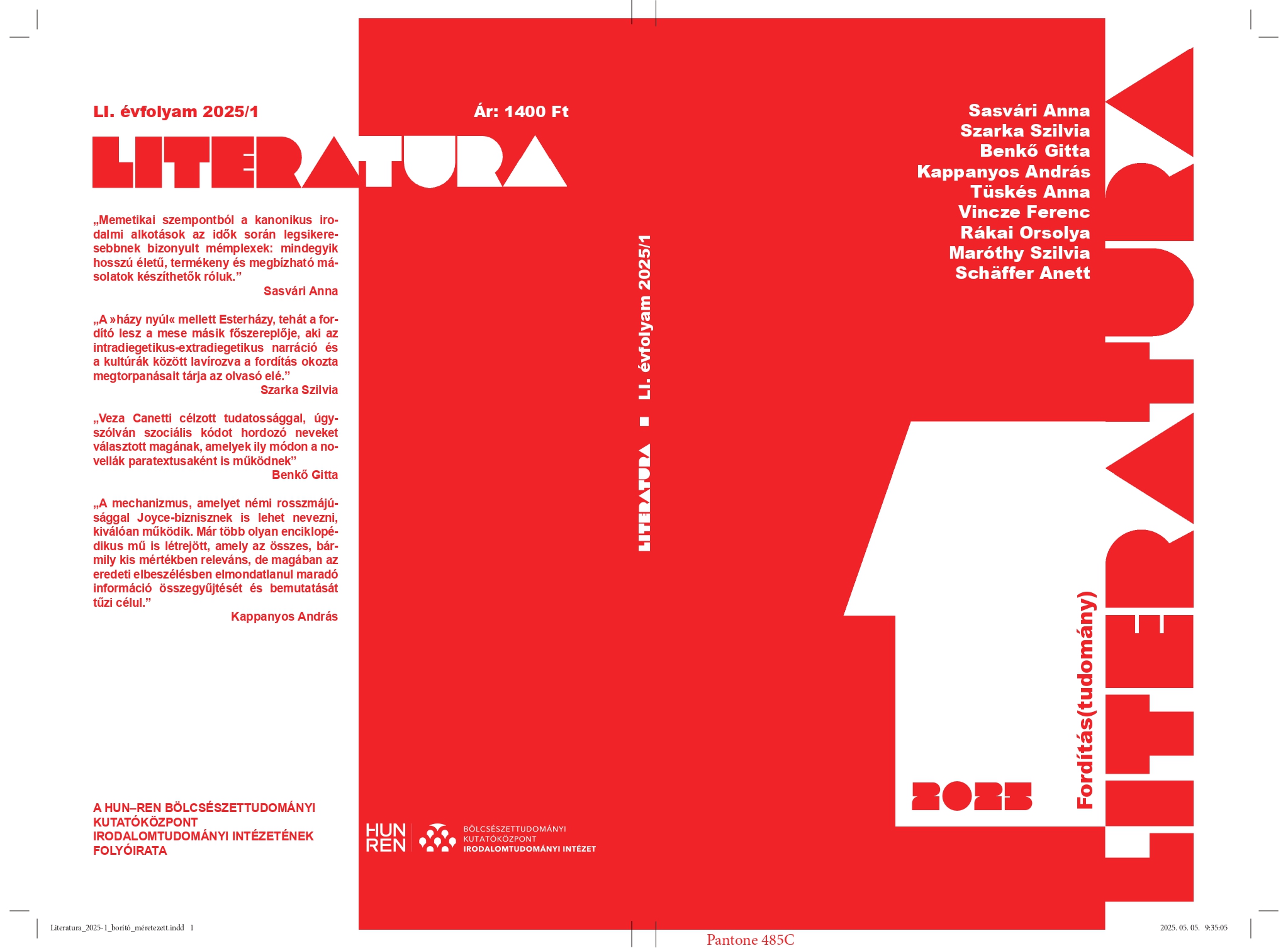“A est(erházy) A.”
The Possibilities of Abandoning Translation in Péter Esterházy’s Rendering of Irene Dische and Hans Magnus Enzensberger’s Esterházy – eine Hasengeschichte
Abstract
The issue of navigating between languages and cultures is a recurring motif in the oeuvre of Péter Esterházy, most notably reflected in his frequent use of the phrase “untranslatable wordplay”, which highlights the challenges inherent in translating specific textual instances, puns, or cultural allusions. In his only translation endeavor—the Hungarian version of the German children’s story Esterházy — eine Hasengeschichte by Irene Dische and Hans Magnus Enzensberger — Esterházy constructs a performative textual space in which various modes of engaging with the process of translation become observable. Through the translator’s playful asides embedded within the Hungarian version, a dynamic simultaneity is created between the translated text and the act of translation itself. Not only does the translated work become visible, but so, too, do the dilemmas of its creation and the translator’s thought process. This study, employing the translation studies concepts of transfiction and transcreation, examines the translation strategy underpinning Esterházy’s choices as a translator. Based on the analysis, it can be concluded that a transfictional reading of the Hungarian version foregrounds the interdependence of cultural translation and interlingual translation — so-called “proper translation”— while emphasizing the transformative and transcreative dimensions of the translation process, along with the creative agency and visibility of the translator. Esterházy’s translation practice can be situated within the shifting position of the translator in postcolonial cultural studies, where translator intervention is no longer viewed negatively. In acknowledging cultural distance and asymmetry, the translator assumes a creative role in the literary work and may even consciously assert their own visibility within the translated text.



